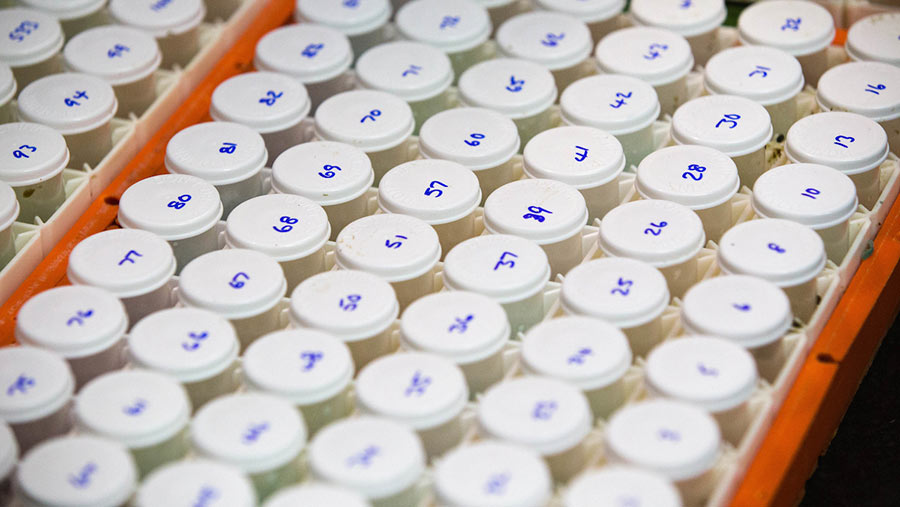4 ways to use milking data to drive herd productivity and profitability
 © Tim Scrivener
© Tim Scrivener Many dairy farmers have access to a wealth of data at their fingertips, but they are not exploiting it to its full value to help drive improvements in herd productivity and profitability.
Vet Dave Gilbert of Dairy Insight said most dairy farmers are focused on cutting costs as pressure on margins persist, but more should target maximising milk yield.
“There’s a lot of focus on cutting costs, but far too often we don’t focus on the productivity of the herd and maximising the potential of the cow to produce milk.
“We often talk about break-even milk price, but when it comes to yield we should talk about break-even litreage – if the milk price is ‘x’, what yield do we need from our cows?”
About 60% of dairy farms in the UK currently milk record monthly, however Mr Gilbert said many don’t properly look at the data.
“I find a lot of time the milk recording data comes in every month, we look at some of the facts, but we don’t scrutinise that data to extract the maximum value we can from it.”
Mr Gilbert outlined four key data milk producers should analyse when they get their milk records.
1. Production
Actions
- Focus on removing cows at the bottom of the production curve: set specific targets.
- Have a clear, long-term breeding strategy in place to ensure cows that are not performing or don’t suit your system are not used to breed replacements.
“There’s not much use making a 15% margin on our milk cheque if all cows at the bottom are not making any money. A lot of farmers will say these cows are diluting fixed costs but probably 30-40% of your cost of production is in variable costs.”
Instead, that cow might make the business more money by not being there, added Mr Gilbert.
2. Somatic cell count (SCC)
Actions
- Cull individual cows that are repeatedly more than 200,000 cells/ml. They are not only long-term problem animals, but they are the source of infection for other cows.
- Look at trends in SCC data and where in the production cycle mastitis is occurring. This can indicate that changes need to be made either with the parlour routine, the environment or drying off, for example.
3. Milk protein
Target
- Milk solid production is a good indicator of how well the cow is reacting to her diet. A cow that is well fed should be capable of producing 90g of protein/day.
- Less than 20% of cows within the herd should be below this target.
Action
- If milk recording data shows cows are failing to meet this target, then it may be that you’re not meeting their energy requirements and diets need adjusting.
- If one cow is below target, then it could be an early warning sign that she’s sick.
4. Johne’s
Incidence levels will vary from herd to herd, but the aim should be for the number of Johne’s cows to reduce over time.
Actions
- Look at trends within the group.
- Are animals moving from low risk to high risk? If so, you need to review your disease management practices with your vet.
